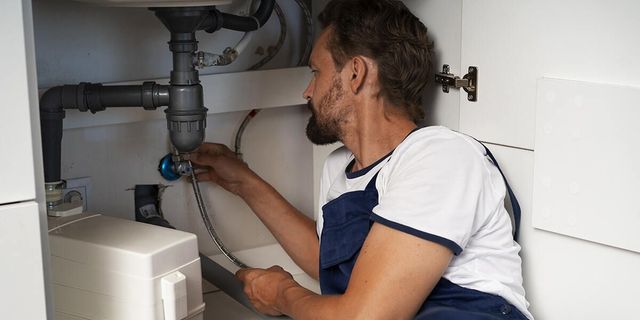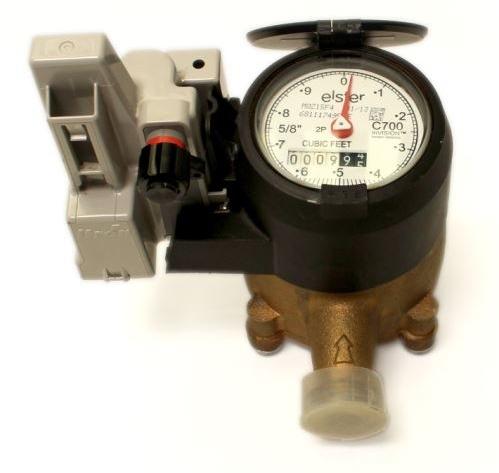Simple Processes to Increase Low Water Pressure in Your Home
Simple Processes to Increase Low Water Pressure in Your Home
Blog Article
They are making a few good points regarding 9 Reasons for Low Water Pressure in Your House in general in the content below.

Low water stress in your house can be a discouraging issue, influencing everything from showering to washing meals. If you're experiencing weak water circulation, there are several possible causes and services to discover. In this overview, we'll go over usual reasons for low tide stress and useful steps to address the problem effectively.
Introduction to Low Tide Stress
Low tide stress happens when the circulation of water from your faucets, showers, and various other components is weaker than common. This can make daily jobs a lot more challenging and much less reliable. Comprehending the reasons for low water stress is vital to finding the ideal solution.
Common Root Causes Of Low Tide Pressure
Pipe Obstructions
Gradually, pipelines can end up being blocked with natural resource, sediment, or particles, limiting the circulation of water. This is a typical issue in older homes with galvanized steel pipes.
Corrosion
Deterioration within pipelines can bring about leaks and decreased water pressure. Corrosion accumulation can restrict water circulation, especially in maturing plumbing systems.
Faulty Stress Regulators
Stress regulatory authorities are in charge of preserving consistent water pressure in your house. If they malfunction, it can result in low water stress or unequal flow throughout your home.
Municipal Water Issues
Occasionally, the problem exists outside your home. Local water supply issues, such as main line leakages or maintenance job, can briefly minimize water pressure in your area.
How to Diagnose Low Tide Stress
Inspecting Faucets and Fixtures
Begin by examining the water pressure at different taps and fixtures throughout your home. If the problem is separated to details areas, it might suggest local issues.
Inspecting Pipelines
Examine noticeable pipes for indicators of leakages, corrosion, or obstructions. Take notice of any unusual noises, such as knocking or rattling pipes, which might show issues within the plumbing system.
Consulting with a Plumber
If you're incapable to pinpoint the source of low water stress, think about employing a professional plumber to perform a thorough examination. They can identify underlying issues and recommend appropriate services.
DIY Solutions to Repair Low Water Stress
Cleaning Up Aerators and Showerheads
Mineral deposits can accumulate in aerators and showerheads, minimizing water flow. Remove and clean these parts routinely to boost water pressure.
Flushing Water Heater
Debris build-up in the hot water heater can limit circulation and minimize effectiveness. Purging the storage tank periodically helps eliminate sediment and preserve optimal performance.
Checking Stress Regulator
Guarantee that the pressure regulatory authority is operating appropriately. Readjusting or replacing the regulator can assist recover correct water stress throughout your home.
Clearing Clogs in Pipes
For small blockages, try utilizing a plumbing snake or chemical drainpipe cleaner to clear obstructions in pipes. Beware when using chemicals and follow security guidelines.
When to Call a Professional Plumber
If DIY initiatives fail to solve the issue or if you believe significant plumbing issues, it's ideal to look for assistance from a qualified plumber. They have the expertise and devices to resolve intricate concerns securely and properly.
Safety Nets to Keep Water Stress
Routine Maintenance
Set up routine upkeep for your plumbing system to prevent problems such as deterioration, leaks, and obstructions. Resolving small issues early can assist prevent more significant repair services later.
Mounting a Pressure Booster
Take into consideration installing a pressure booster pump to improve water stress in locations with regularly reduced flow. This can be specifically useful for multi-story homes or residential or commercial properties with high-demand fixtures.
Tracking Water Usage
Be mindful of water usage routines and prevent overtaxing the plumbing system. Easy adjustments, such as staggering showers and washing lots, can aid preserve ample water pressure.
Conclusion
Taking care of low water stress can be irritating, however determining the underlying reasons and executing appropriate remedies can bring back ideal circulation throughout your home. Whether it's cleansing aerators, examining pipes, or talking to a plumber, taking aggressive actions can make sure a stable supply of water for your everyday requirements.
FOUR WAYS TO FIX LOW WATER PRESSURE NOW
Turning on a shower or faucet only to find the water comes out in a sad, slow drizzle is never a good feeling. How exactly are you supposed to wash a pan or take a quick shower when it takes 10 minutes just to rinse off a little soap? The good news is that when your water pressure is bad, there's always a cause: typically one that can be easily fixed. Here are some of the most common causes of low pressure and what you can do to fix the issue:
DEBRIS AND MINERAL DEPOSIT BUILDUPS
If you notice low water pressure from just one or two of the fixtures in your house, the problem likely has to do with debris buildup. Water is full of minerals and other debris, all of which can accumulate in your pipes and on your fixtures. This can cause a blockage that affects how much water flows through. To fix this, try filling a small plastic bag with white vinegar, and use a rubber band to hang it around your showerhead or faucet. Let the head of the fixture soak for a few hours, and the vinegar should loosen the deposits.
WATER LEAKS
Leaks are another common cause of low water pressure. If water is flowing out of your plumbing through a hole or crack before it can reach your fixture, the pressure coming out of the faucet or showerhead will be lower. A plumbing professional is your best bet for finding and repairing a leak in your water supply pipes.
Leaks are another common cause of low water pressure. If water is flowing out of your plumbing through a hole or crack before it can reach your fixture, the pressure coming out of the faucet or showerhead will be lower. A plumbing professional is your best bet for finding and repairing a leak in your water supply pipes.
FOUR WAYS TO FIX LOW WATER PRESSURE NOW
Turning on a shower or faucet only to find the water comes out in a sad, slow drizzle is never a good feeling. How exactly are you supposed to wash a pan or take a quick shower when it takes 10 minutes just to rinse off a little soap? The good news is that when your water pressure is bad, there's always a cause: typically one that can be easily fixed. Here are some of the most common causes of low pressure and what you can do to fix the issue:
DEBRIS AND MINERAL DEPOSIT BUILDUPS
If you notice low water pressure from just one or two of the fixtures in your house, the problem likely has to do with debris buildup. Water is full of minerals and other debris, all of which can accumulate in your pipes and on your fixtures. This can cause a blockage that affects how much water flows through. To fix this, try filling a small plastic bag with white vinegar, and use a rubber band to hang it around your showerhead or faucet. Let the head of the fixture soak for a few hours, and the vinegar should loosen the deposits.
WATER LEAKS
Leaks are another common cause of low water pressure. If water is flowing out of your plumbing through a hole or crack before it can reach your fixture, the pressure coming out of the faucet or showerhead will be lower. A plumbing professional is your best bet for finding and repairing a leak in your water supply pipes.
Leaks are another common cause of low water pressure. If water is flowing out of your plumbing through a hole or crack before it can reach your fixture, the pressure coming out of the faucet or showerhead will be lower. A plumbing professional is your best bet for finding and repairing a leak in your water supply pipes.
A VALVE ISSUE
If you have low water pressure throughout your home, check your main shut-off valve to make sure it's completely open. You may also want to see if there's a pressure-reducing valve installed. If there is, have a plumber help you adjust the settings to get the pressure you're looking for.
OTHERS USING WATER
Believe it or not, your low water pressure could be caused by your neighbors. If you notice low pressure at certain times of day, it may be because you and the people living next to you have similar schedules - when everyone is showering at the same time, the pressure will be lower in every home. Low pressure throughout the neighborhood may also be caused by an issue with your municipal water supply. If that's the case, call the supplier to see if they're working on the issue.
https://www.rotorooter.com/blog/water-leaking/low-water-pressure-fixes/

I am very focused on 4 Ways to Troubleshoot Low Water Pressure and I hope you enjoyed the piece. Are you aware of somebody else who is very much interested in the topic? Please feel free to promote it. Many thanks for your time spent reading it.
Book Service Report this page